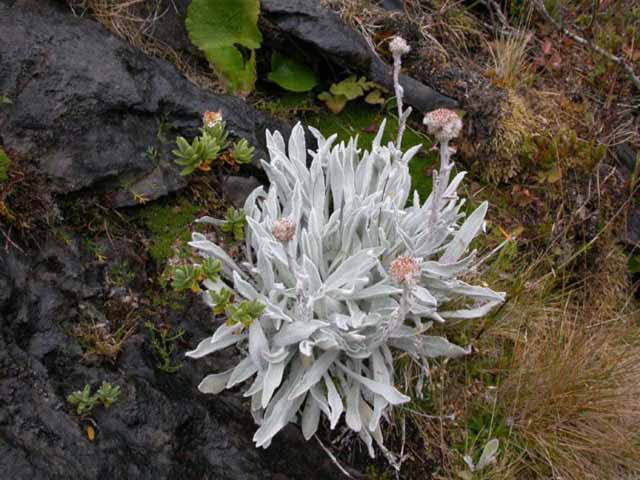
Kerry Ford
Contact:
The Allan Herbarium,
Landcare Research,
PO Box 69, Lincoln
Email: fordk@landcareresearch.co.nz
Supervisor:
Dr Josephine Ward,
University of Canterbury
Associate Supervisor:
Dr Ilse Breitwieser,
The Allan Herbarium,
Landcare Research
Craspedia is a daisy genus of 23 species restricted to New Zealand and Australia. In New Zealand it is an outlier in the subtribe Angianthinae, with the remaining c. 60 genera endemic to Australia. The New Zealand Craspedia are widespread and morphologically variable, and this variation does not reflect an easily understandable pattern, making species definition problematic. Localised and morphologically distinct populations have resulted in the recognition of 45 informal undescribed entities.
With regard to the relationship between New Zealand and Australian members of the genus, it is unclear whether there are one or several lineages shared between the two regions. In this study I aim to focus on the question:
How many times has Craspedia colonised New Zealand?
A cladistic analysis using molecular markers will be used to reconstruct phylogenetic relationships within Craspedia, from a sample of species and entities representative of the genus. Outgroups to determine the direction of evolution will be chosen from recent molecular phylogenies of the Australian and New Zealand Gnaphalieae.
The non-coding intergenic spacers ITS1 and ITS2 from the nuclear genome, and psbA-trnH from the chloroplast genome will be used in this study, providing two independent data sets. It is hoped these molecular markers will be variable enough to distinguish lineages, and to trace the origins of these lineages at a trans-Tasman biogeographic scale.
The phylogeny based on molecular data will give an explicit hypothetical framework of ancestry, and of independent evolutionary events. It can be used to examine any trait, habitat or distributional information in light of the phylogeny. This will enable generation of hypotheses on biogeography, and the determination of potential ancestral conditions of traits and evolutionary trends.
A number of researchers have hypothesised recent adaptive radiations in New Zealand from jump-dispersal events across the Tasman Sea, eg. Epilobium, Hebe/Parahebe/Chionohebe complex, Myosotis and the alpine Ranunculus. Dispersal to Australia of derivatives from New Zealand radiations has also been suggested. However it has been argued by some, that propagule dispersal is one way across the Tasman Sea ie. west to east, in the direction of the prevailing westerly winds.
These studies, together with those investigating the New Zealand fossil record have challenged the traditional view of ancient origin and isolation of the New Zealand flora. Rather they support relatively recent arrival via trans-oceanic dispersal in the late Tertiary and Quaternary, and rapid radiation in New Zealand, particularly in flowering plant groups.
Discovering whether Craspedia in New Zealand is the result of one or more colonisation events will be an important step in understanding the evolution and biogeography of the group. It will provide a framework for further exploration of morphological, ecological and geographical patterns at a finer scale in New Zealand, and also has relevance to the debate on the origins of the New Zealand flora, and the inter-relationships of the New Zealand and Australian floras.
|